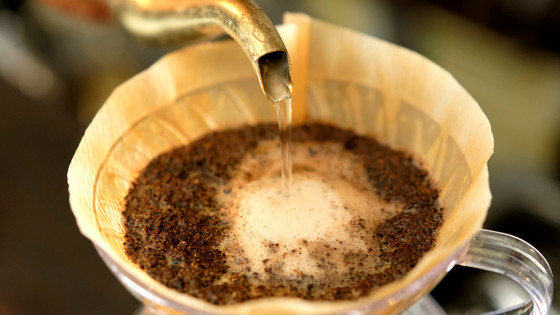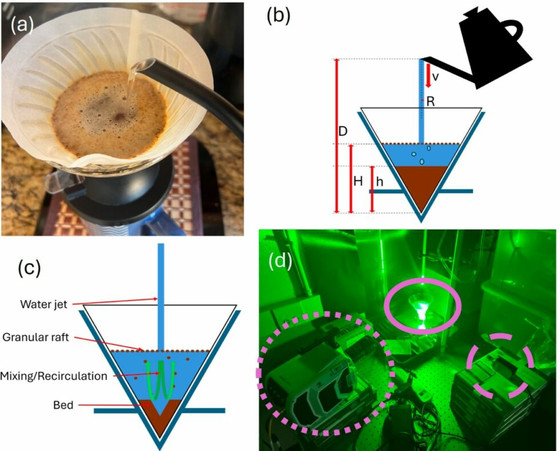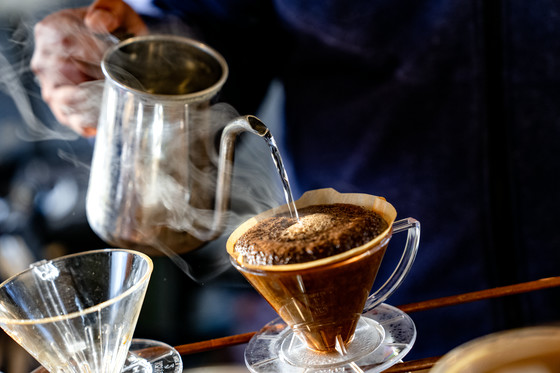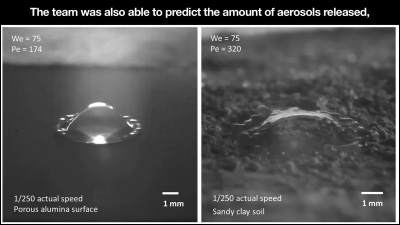The 'height' at which hot water is poured over the coffee powder greatly affects the extraction efficiency and flavor of the coffee.

A research team from the University of Pennsylvania has reported that they have discovered a way to brew rich, flavorful coffee even with fewer beans by analyzing the interaction between the water flow and coffee powder during the drip coffee extraction process. The research team conducted experiments focusing on factors such as the water flow height, water flow speed, and water flow width as ways to improve extraction efficiency.
Pour-over coffee: Mixing by a water jet impinging on a granular bed with avalanche dynamics | Physics of Fluids | AIP Publishing
Coffee too weak? Try this! | EurekAlert!
https://www.eurekalert.org/news-releases/1079393
Fewer beans = great coffee if you get the pour height right - Ars Technica
https://arstechnica.com/science/2025/04/the-trick-to-making-great-pour-over-coffee-with-fewer-beans/
The research team constructed a model system using a transparent funnel and silica gel particles, and used high-speed cameras and lasers to closely observe the interaction between the water flow and the powder. In addition, they measured the particle size distribution of the coffee powder and analyzed the total dissolved solids (TDS) in the liquid after extraction to quantitatively grasp the change in extraction efficiency.

As a result, it was found that in order to maximize mixing with the coffee powder and obtain a higher extraction rate, it is optimal to keep the height from the spout to the coffee powder at about 30 cm. This height of 30 cm is suitable for providing the water flow with the appropriate amount of gravity energy and stabilizing the water flow to promote uniform mixing with the powder.

Conversely, if the height from the spout to the coffee grounds exceeds 50cm, the water flow splits in the air and becomes droplets, which makes contact with the grounds uneven and reduces extraction efficiency. It was also found that if the pouring height is too low or the pouring speed is too slow, the liquid drips along the spout of the container , making it difficult to pour the water, causing the grounds to sink to the bottom without sufficient mixing.
'When the water stream narrows, it breaks up and doesn't mix effectively with the coffee grounds,' said Margot Young, a graduate student at the University of Pennsylvania and one of the study's authors. 'To avoid that, you need to pour the water from a certain height and at a constant flow rate.'
According to the research team, the background to this research is the reality that 'climate change is making it increasingly difficult to grow coffee beans. ' Co-researcher Arnold Mathisen, assistant professor at the University of Pennsylvania, said, 'Establishing a method to obtain the same extraction volume and flavor while reducing the amount of beans used is very meaningful for the future of coffee culture.

The research team argued that the results of this study could contribute to our understanding of various phenomena where liquids and granular materials intersect, such as soil erosion caused by waterfalls, aeration in sewage treatment, and erosion of foundations of dams, in addition to coffee extraction. In the future, further research is expected to be conducted on how differences in the particle size, shape, and material of coffee powder affect extraction efficiency.
Related Posts:







